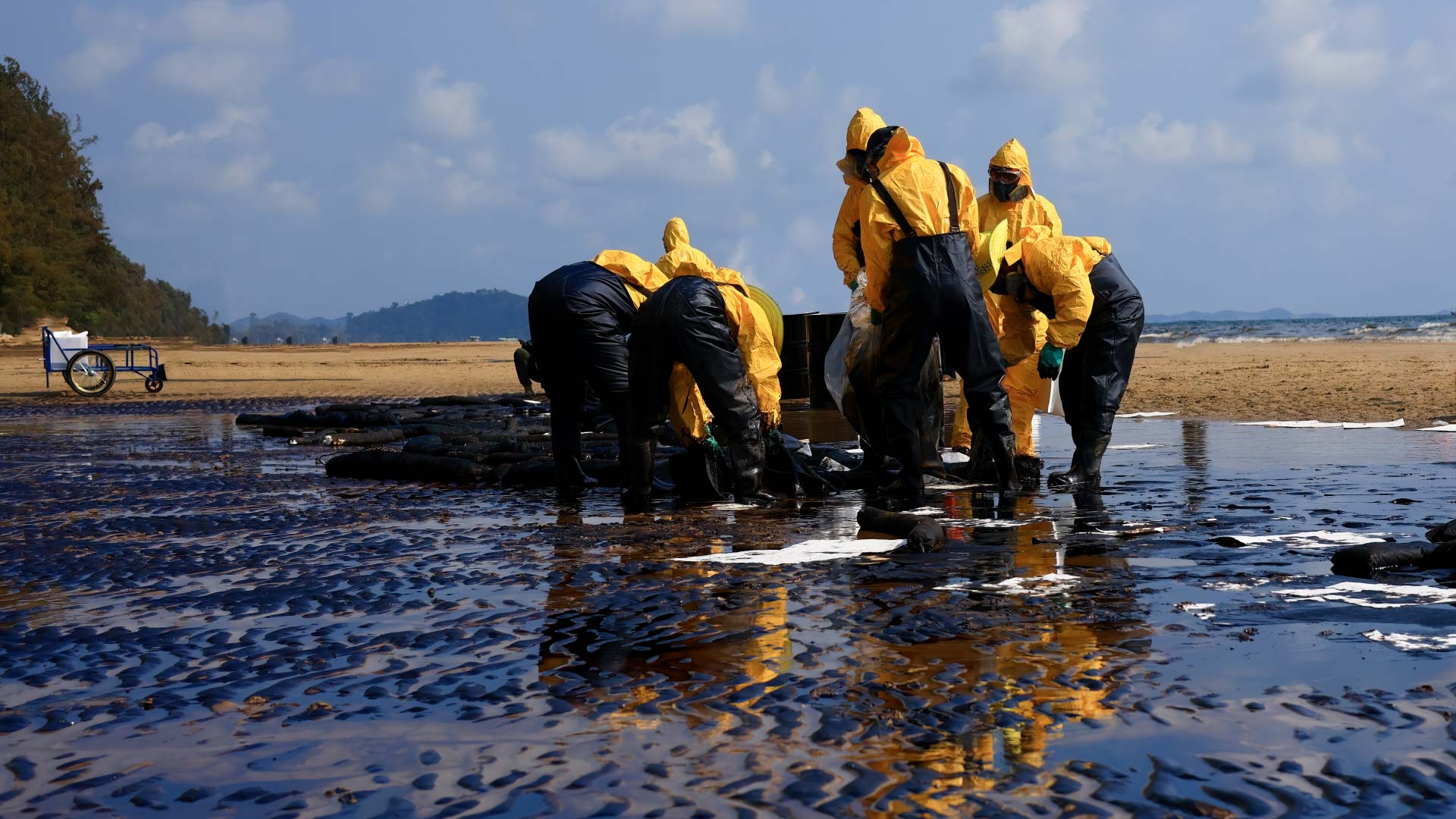Overview of the Oil Spill Incident
(Bloomberg) — Singapore has recently concluded an extensive cleanup operation following an oil spill that occurred in mid-June near Sentosa, one of the nation’s most popular resort islands. This major environmental incident required a coordinated effort involving thousands of individuals and significant resources to restore the affected areas.
The oil spill originated from a collision between two vessels, the Netherlands-flagged dredger Vox Maxima and the bunker-fuel vessel Marine Honour, at the Pasir Panjang Terminal in June. The impact of this collision caused a substantial amount of bunker fuel to leak into the surrounding waters, leading to an oil slick that spread to several beaches, including those around Sentosa.
Extensive Cleanup Efforts
To address the environmental damage caused by the spill, Singapore mobilized a significant workforce. Approximately 800 cleaning personnel and 2,300 volunteers were involved in the operation, working tirelessly to remove the oil and debris. In total, these efforts resulted in the removal of 3,750 tons of debris from the affected areas.
Grace Fu, Minister for Sustainability and the Environment, praised the collaborative efforts in a Facebook post on Tuesday, highlighting the dedication of both professional cleaners and volunteers in restoring the beaches.
Impact on Sentosa and Surrounding Beaches
Sentosa Beach, a key attraction in Singapore, was heavily impacted by the oil spill. The environmental damage extended beyond Sentosa, with the oil slick affecting several other beaches across the island. The spill not only disrupted tourism but also posed significant environmental risks to marine life and coastal ecosystems.
Resumption of Activities and Ongoing Monitoring
Thanks to the successful cleanup operations, swimming has now resumed at some of the previously affected beaches. However, Singapore is taking a cautious approach, with daily water quality tests continuing at other sites to ensure the safety of the public and the environment. These tests are crucial in monitoring any potential residual contamination and ensuring that the beaches are safe for recreational activities.
Long-Term Environmental Impact and Preventive Measures
While the immediate cleanup efforts have been successful, the long-term environmental impact of the oil spill remains a concern. Singapore’s government, along with environmental agencies, will continue to monitor the affected areas to assess any lasting damage to the marine ecosystem. Preventive measures are also being reviewed to minimize the risk of future incidents.
This incident serves as a reminder of the vulnerability of coastal areas to environmental disasters and underscores the importance of robust preventive and emergency response measures.
Conclusion
Singapore’s swift and effective response to the oil spill demonstrates its commitment to environmental protection and sustainability. The successful cleanup operation, combined with ongoing monitoring and preventive strategies, highlights the importance of collective action in addressing environmental challenges. As Singapore moves forward, lessons learned from this incident will likely shape future policies to better protect its coastal regions and marine ecosystems.
This incident underscores the need for continuous vigilance and preparedness to safeguard the environment against similar threats in the future.
